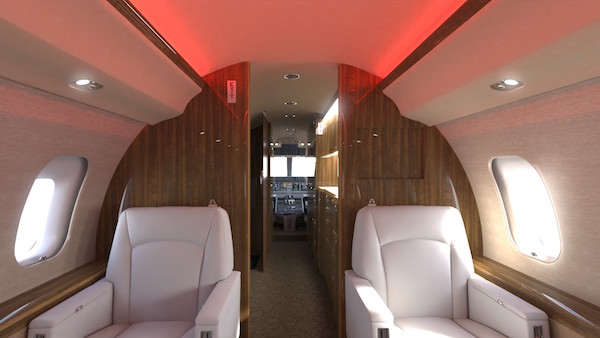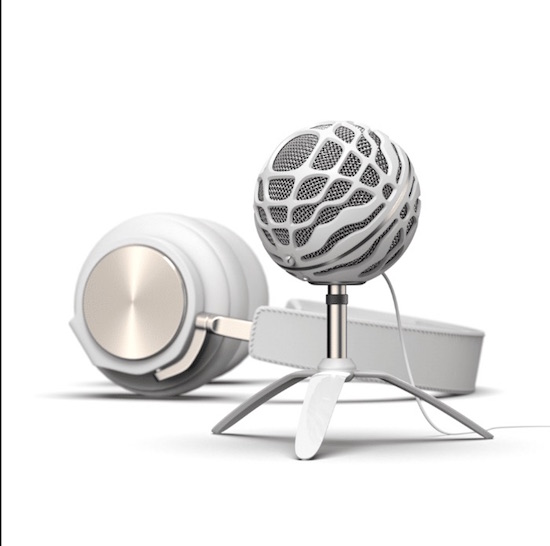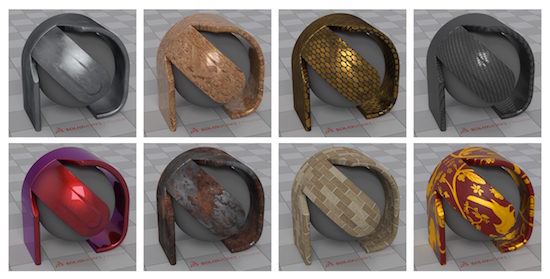GPU-Accelerated Visualization Makes its Mark
More software solutions are taking advantage of real-time ray tracing and enhanced visualization made possible via the GPU.

Image courtesy of Luxion.
Latest News
January 19, 2021
In 2018 NVIDIA made headlines when it announced its RTX GPU family would enable hardware-accelerated real-time ray tracing and AI denoising. However, GPU acceleration was still not widely supported for these applications in the engineering and design market.
Over the past 12 months, however, the real impact of GPU-accelerated rendering is fully coming to bear. There are now dozens of 3D applications that support the RTX platform. In the engineering space, software solutions like Siemens NX RT Studio, SOLIDWORKS Visualize, Luxion KeyShot, and products from Ansys, Autodesk and others have unlocked entirely new workflows by allowing users to access rapid rendering and visualization tools.

SOLIDWORKS Visualize 2020 rendering with NVIDIA Quadro RTX 6000, 1,000 passess in 2 minutes, exhibiting a ~30% speed improvement compared to Visualize 2019 SP4. Image courtesy of SOLIDWORKS.
When Luxion announced that its KeyShot product would support GPU-accelerated ray tracing via NVIDIA technology back in 2019, it was heralded as an important milestone in enabling new levels of rendering and visualization performance.
That performance is taking another dramatic leap forward with the release of both KeyShot 10 and the new NVIDIA RXT A6000 GPU. According to the companies, the combination fo KeyShot 10 and the new GPU could potentially increase performance significantly. According to Bob Pette, vice president of the professional visuzlation product group at NVIDIA:
“Luxion, makers of the popular KeyShot product visualization tool, is seeing close to triple the performance using the NVIDIA Ampere architecture. The integrated benchmark in the free KeyShot Viewer gave 34.7 on the NVIDIA RTX 6000 and 88.8 on the NVIDIA RTX A6000. In the upcoming KeyShot 10 release the performance on the A6000 was even better at 95.6 — that means the A6000 is 95.6x faster than the CPU baseline.“

The KeyShot benchmark scene (Magnus Skogsfjord). Image courtesy of Luxion.
Benchmarking with previous NVIDIA GPU products also shows significant speed-up thanks to RTX support. This blog outlines benchmark testing that compares CPU rendering and GPU rendering using the NVIDIA Quadro RTX 6000. The GPU was 3X faster than the CPU, and maintained a workload of about 98%. The blog also notes that the newer RTX cards are roughly six-times faster than the Pascal-based previous-gen GPUs.
Memory remains a key constraint in KeyShot whether you are using the CPU or GPU, but for companies working with large, complex models, the using multiple GPUs can effectively address that constraint:
“The GPU can handle pretty complex scenes though,” writes Henrik Wann Jensen, chief scientist at Luxion. “With two RTX 5000 cards using NVIDIA NVLink for a combined 32 GB of memory, we have been able to ray trace scenes containing 1.37 billion unique triangles. However, sharing geometry over NVLink does come at a fairly significant performance hit. For complex scenes, the Quadro RTX 6000 with 24 GB or the Quadro RTX 8000 with 48 GB offers quite a bit of room for geometry and textures, and these cards may still use NVLink offering up to 96 GB of shared GPU memory.”

SOLIDWORKS Visualize. Image courtesy of SOLIDWORKS.
SOLIDWORKS Visualize has also shown significant improvements in its 2020 release leveraging RTX GPUs. According to the SOLIDWORKS blog:
“In our own performance benchmarks, we’ve seen an average of 30% speed improvements with Visualize 2020 over 2019 SP4 on the same RTX hardware! Some scenes show improvements of up to 50%! That’s a remarkable increase in render performance.
“To put this in perspective, an HD-sized image that took five minutes to render will now complete in 2-3 minutes. While notable in its own right, it’s even more impressive when you consider a long animation, which consists of hundreds or thousands of images. A 10-second long animation that took a full day to complete, will now finish in around half a day.”
Adam Hughes of Goengineer.com, the most recent SOLIDWORKS releases have taken advantage of the NVIDIA RTX platform in SOLIDWORKS CAD, eDrawings Pro VR, and Visualize in ways that can greatly improve productivity.
“We are seeing an incredible trend in the software world where companies are changing their code and taking advantage of multi-threaded GPU processes,” Hughes says. He adds that the improvements are not just incremental, but orders of magnitude better than previous releases.
In SOLIDWORKS CAD, for example, GPU acceleration has allowed users to work with models that have much greater levels of detail. The photorealistic VR in eDrawings Pro has accelerated a number of design processes. “Now that we are all working remotely and we cannot be in the office holding prototypes, having design reviews in VR actually speeds things up,” says Mike Geyer, manufacturing industry strategist at NVIDIA. “You can see the details of the design virtually, and that reduces lead times and shortens product milestones.”
SOLIDWORKS Visualize has also made it possible to quickly create highly accurate visuals for design reviews and approvals throughout the design cycle, as well as for preparing marketing collateral in advance of actual prototyping. That type of GPU-based real-time ray tracing and AI denoising simply was not possible prior to 2018. “Now that we have GPUs with more than 3G of VRAM, you can turn on that denoising capability and achieve 10X rendering speeds,” Hughes says.
For more information on recommended workstation configurations for SOLIDWORKS, Goengineer.com offers guidance here.
More Dell Coverage

More NVIDIA Coverage
Subscribe to our FREE magazine, FREE email newsletters or both!
Latest News
Related Topics








